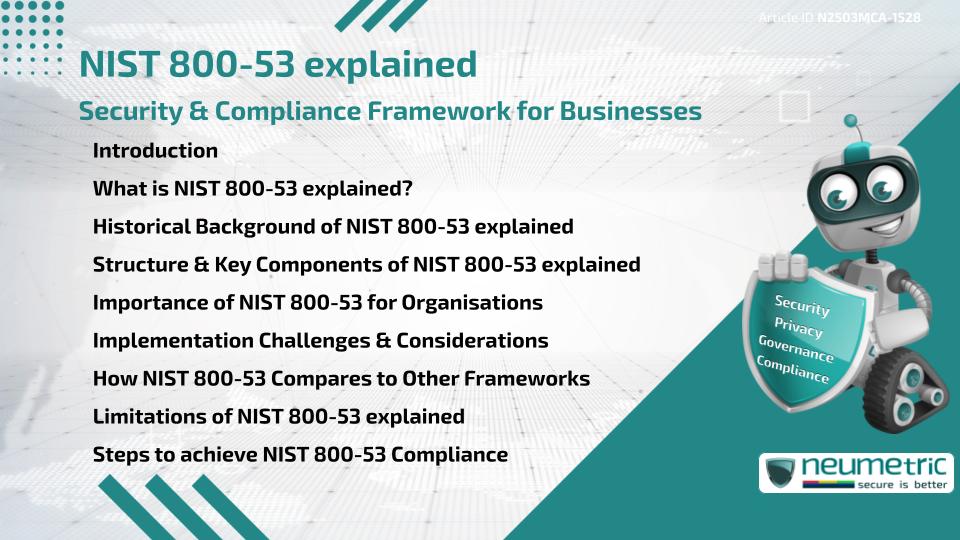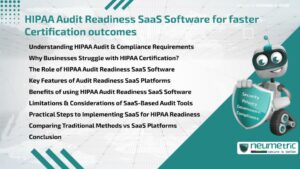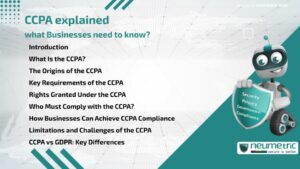Table of Contents
ToggleIntroduction
The National Institute of Standards & Technology [NIST] 800-53 Framework is a widely recognized Security Control catalog that provides guidelines for Federal Agencies & Organisations managing Sensitive Data. It helps ensure that Information Systems remain secure against Cyber Threats by offering a structured approach to Risk Management. This article provides a comprehensive overview of NIST 800-53 in an accessible & detailed manner.
What is NIST 800-53 explained?
NIST 800-53 is a set of Security & Privacy controls designed to protect Federal Information Systems & Organisations handling Sensitive Data. It serves as a foundation for implementing robust Security Measures by categorizing Controls into different families, including Access Control, Risk Assessment & Incident Response.
Historical Background of NIST 800-53 explained
NIST introduced the 800-53 Framework as part of the Federal Information Security Management Act [FISMA] to standardize Security Controls across Federal Agencies. Over the years, multiple revisions have refined the Framework to address emerging Cybersecurity Threats & evolving Technological Landscapes.
Structure & Key Components of NIST 800-53 explained
NIST 800-53 is structured into control families that focus on different aspects of Cybersecurity, such as:
- Access Control [AC] – Managing User Permissions & Authentication
- Audit & Accountability [AU] – Logging & Monitoring activities
- Risk Assessment [RA] – Identifying & mitigating Risks
- System & Communications Protection [SC] – Safeguarding Data Transmission
Each control family is further divided into baseline controls tailored for different Security levels: Low, Moderate & High.
Importance of NIST 800-53 for Organisations
Organisations benefit from NIST 800-53 through improved Security postures, Regulatory Compliance & enhanced Risk Management. Following its guidelines reduces the Likelihood of Cyber Incidents & ensures Data Protection, particularly for Government Contractors & Critical Infrastructure Operators.
Implementation Challenges & Considerations
While NIST 800-53 provides a strong Security Framework, its implementation comes with challenges such as:
- Resource Intensity – Requires significant time & investment
- Complexity – Involves managing numerous Controls across multiple domains
- Continuous Monitoring – Needs ongoing updates to remain compliant
Organisations must assess their Security needs & establish clear implementation Roadmaps to overcome these challenges.
How NIST 800-53 Compares to Other Frameworks
NIST 800-53 is often compared with:
- ISO 27001 – A global Standard focusing on Information Security management
- SOC 2 – Centered on Service Organisations managing Customer Data
- CIS Controls – Prioritizing Practical Security Best Practices
While these Frameworks share similarities, NIST 800-53 is uniquely tailored for Federal Compliance & offers a granular approach to Security controls.
Limitations of NIST 800-53 explained
Despite its comprehensive nature, NIST 800-53 has limitations, including:
- Overhead Costs – Implementing all Controls can be costly
- Rigid Structure – May not be flexible for all business environments
- Focus on Federal Systems – Less suited for small Private Organisations
Businesses must weigh these limitations when deciding on their Cybersecurity approach.
Steps to achieve NIST 800-53 Compliance
Organisations seeking Compliance should follow these steps:
- Assess Security Requirements – Identify applicable Controls based on Risk level
- Develop a Compliance Roadmap – Create an Action Plan for implementation
- Implement Security Controls – Apply necessary Technical & Administrative Measures
- Monitor & Update – Continuously assess & enhance Security controls
- Conduct Audits – Ensure ongoing Compliance through regular Evaluations
Following these steps ensures a structured & efficient Compliance process.
Takeaways
- NIST 800-53 provides a Security Framework for Federal & Sensitive Data systems.
- It consists of multiple Control families covering diverse Cybersecurity aspects.
- Organisations must consider implementation challenges & associated costs.
- Comparing NIST 800-53 with other Frameworks helps in selecting the right Security approach.
- Compliance requires Continuous Monitoring & strategic implementation.
FAQ
What is the purpose of NIST 800-53?
NIST 800-53 provides a standardised set of Security & Privacy controls to protect Federal Information Systems & Organisations handling Sensitive Data.
Who needs to comply with NIST 800-53?
Federal Agencies, Government Contractors & Businesses handling Federal Data must comply with NIST 800-53 to meet Security & Privacy requirements.
How often is NIST 800-53 updated?
NIST periodically updates 800-53 to address evolving Cybersecurity Threats & Technological advancements, with the latest revisions improving Security Measures.
How does NIST 800-53 differ from NIST 800-171?
While both Frameworks focus on Security, NIST 800-53 applies to Federal Agencies, whereas NIST 800-171 is designed for Non-Federal Organisations handling Controlled Unclassified Information [CUI].
Is NIST 800-53 mandatory?
NIST 800-53 is mandatory for Federal Agencies & Contractors but serves as a best practice guideline for Private-Sector Organisations seeking enhanced Security.
How long does it take to implement NIST 800-53?
The implementation timeline depends on the Organisation’s Size & Security maturity, typically ranging from several months to over a year.
Can Small Businesses use NIST 800-53?
Yes, but Small Businesses may find it resource-intensive & may opt for alternative Frameworks like CIS Controls or ISO 27001.
What are the main challenges in achieving NIST 800-53 Compliance?
Challenges include the complexity of Control implementation, resource allocation & Continuous Monitoring to ensure long-term Compliance.
Does NIST 800-53 cover Cloud Security?
Yes, NIST 800-53 includes controls for Cloud Security, addressing Risks related to Cloud-based Infrastructures & Data Protection.
Need help?
Neumetric provides organisations the necessary help to achieve their Cybersecurity, Compliance, Governance, Privacy, Certifications & Pentesting goals.
Organisations & Businesses, specifically those which provide SaaS & AI Solutions, usually need a Cybersecurity Partner for meeting & maintaining the ongoing Security & Privacy needs & requirements of their Clients & Customers.
SOC 2, ISO 27001, ISO 42001, NIST, HIPAA, HECVAT, EU GDPR are some of the Frameworks that are served by Fusion – a centralised, automated, AI-enabled SaaS Solution created & managed by Neumetric.
Reach out to us!





